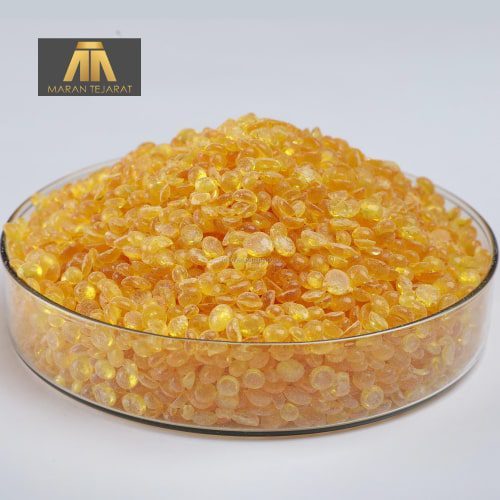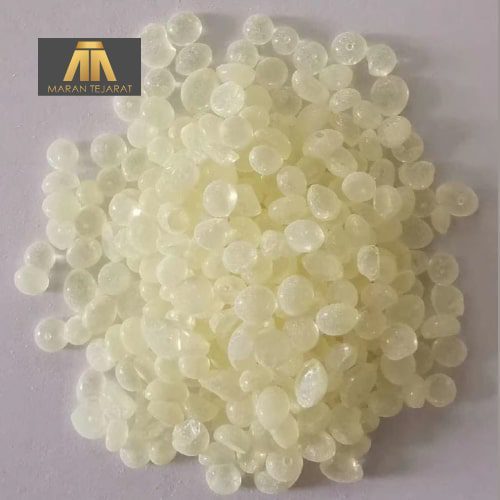
Petroleum resins (hydrocarbon resins).
Petroresin or hydrocarbon resin is a type of thermoplastic polymer that is mainly known in two groups of aliphatic (C5) and aromatic (C9) resins. In order to improve the properties, thermal stability, UV resistance, prevent the color change of the final product and eliminate the smell of petrozines, they undergo the hydrogenation process. Also, to use the properties of C9 and C5 at the same time, they are copolymerized.
Petroresin C9

Petroresin C5
Physical form: granules
Attributes: Petroresin C5 is a thermoplastic aliphatic resin with low molecular weight. Due to their aliphatic chemical nature, C5 petrozines work best as singletizers for predominantly aliphatic polymers such as natural rubber, styrene-isoprene-styrene copolymers, styrene-ethylene-butylene-styrene copolymers, amorphous polyolefins, polyethylene, butyl rubber. , EPDM rubber and waxes show.
Applications: in the production of adhesive tapes and pressure-sensitive labels, insulating tapes, thermoplastic adhesives (hot melt), wax, hot traffic paints, rubber compounds and coatings.
Packaging type: 25 kg bag
C5/C9 copolymer
Features: high solubility and stability, modification of the physical properties of polymers, increase in adhesion and decrease in melt viscosity
Applications: rubber, styrene butadiene rubber (SBR), nitrile-butadiene rubber (NBR), block copolymers and ethylene vinyl acetate (EVA), soft heat adhesives (hot melt) for non-woven fabrics (wound glue)
Packaging type: 25 kg bag

C5 hydrogenated petro-resin
Physical form: granules
Features: Hydrogenation is a process that is done after the polymerization of resins, and its purpose is to make it clear and bright.(Gardner reduction) resin and improving its resistance to heat, oxygen and ultraviolet rays. Although this process increases the cost of resin production, but at the same time, it improves its properties significantly. In some special applications, a resin with the highest stability and lowest Gardner is required.
Applications: Hydrogenated aliphatic single-firers have the best performance next to SIS-based hot melts and amorphous polyolefins, adhesive industries, polyethylene and EVA, warm graphic coatings and wax compounds.
Packaging type: 25 kg bag
C9 hydrogenated petro-resin
Attributes: Conventional C9 petroresin has a large number of double bonds that are somewhat unstable. A practical way to stabilize C9 resin is to hydrogenate it. During this process, aromatic ring structures gradually lose their aromatic nature and become cyclo-aliphatic structures.
Applications: The resulting resin will be suitable for use in a wide range of adhesives with sanitary applications and compounds based on SBS and SEBS.
Packaging type: 25 kg bag
